Storage Stunners for Every Room of Your Home
(NewsUSA) - Trying to be better organized and looking to overcome your storage dilemma with more than a dull metal rack or a makeshift cubby? Take your cue from these design pros. Throughout the home, they’re creating functional and beautiful storage solutions. How? They’re doing it with all-natural cypress. And you can, too!
- Trying to be better organized and looking to overcome your storage dilemma with more than a dull metal rack or a makeshift cubby? Take your cue from these design pros. Throughout the home, they’re creating functional and beautiful storage solutions. How? They’re doing it with all-natural cypress. And you can, too!
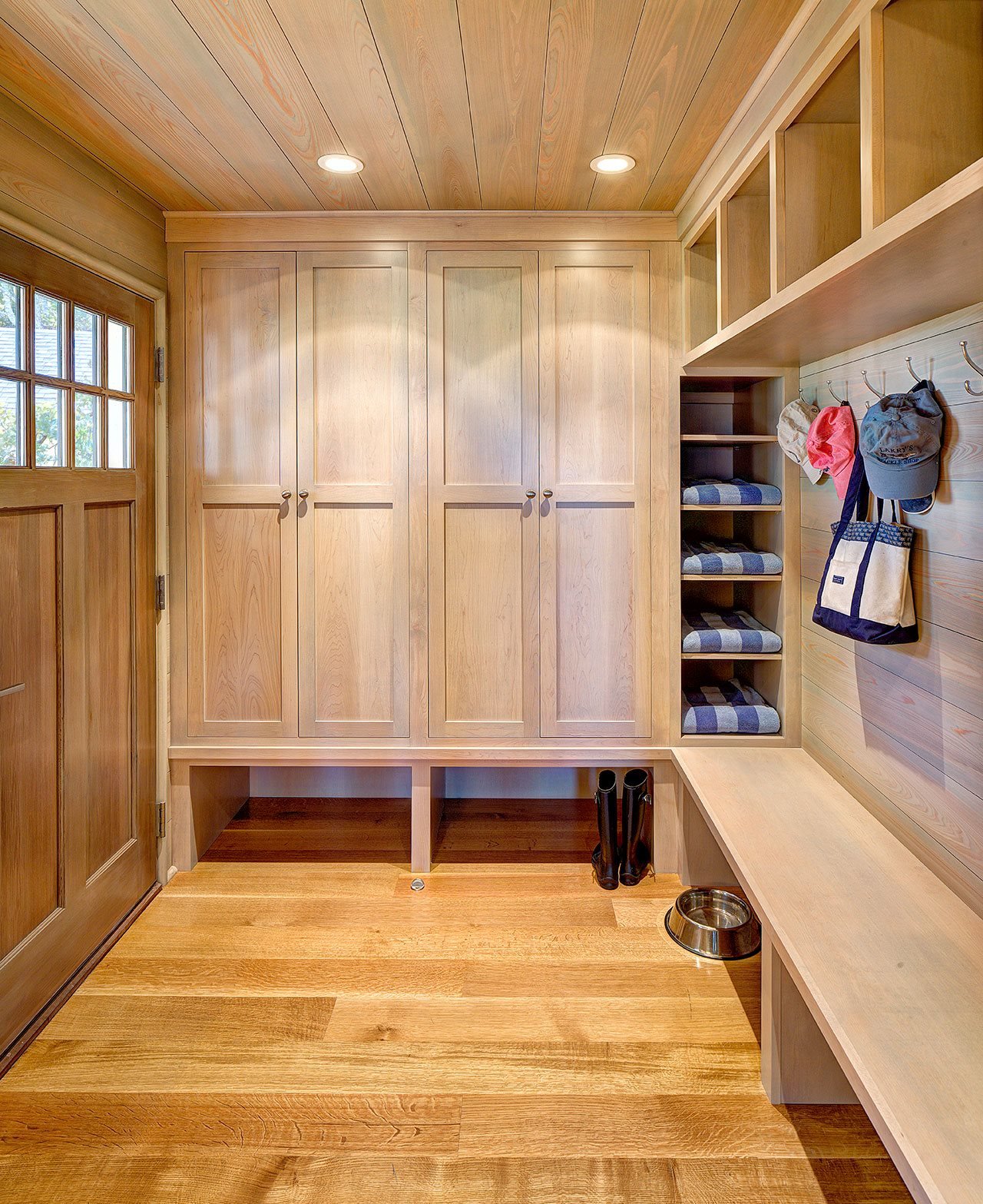
Starting at the Entryway
A well-designed mudroom—crafted to handle the mess of rain, mud, snow, and sand—can be warm, welcoming, and functional, as well. Ian Faight of the Southern Cypress Manufacturers Association, www.CypressInfo.org, suggests using cypress to dress up that high-traffic space. “Cypress is a beautiful wood, perfect for cabinets and cubbies, flooring, paneling, and ceilings,” he explains. “And it’s a durable material that can stand up to everyday use—and look good doing it.” Photo courtesy of Bob Gothard

Cypress in the Kitchen
At the heart of it all, and integral to any practical kitchen layout, is the island—that all-encompassing oasis used for storing pots and pans, preparing meals, and working on homework. “In the kitchen, homeowners are looking for functional design with as much storage space as possible,” says Ellie Schroder from Maison de Reve Buildings, Abita Springs, Louisiana. “If you have modern, painted cabinets, set off the island in a complementary color and a textured wood like pecky cypress, so that the island is like a piece of fine furniture that’s different from the rest of the kitchen.” Photo courtesy Julie D. Philippus

In the Bedroom
Closets and dressers are great for keeping clothes out of sight, but they don’t offer much storage for knickknacks, picture frames, and other personal items. Woodworker Julie Philippus from Mandeville, Louisiana, suggests building into the walls for rooms lacking storage. “Built-ins can be an inexpensive way to add extra storage and a custom look to bedrooms—or any rooms—that are short on space,” she says. “To dress up basic shelving, I like adding pecky cypress backboards to create a one-of-a-kind look.” Photo courtesy Julie D. Philippus
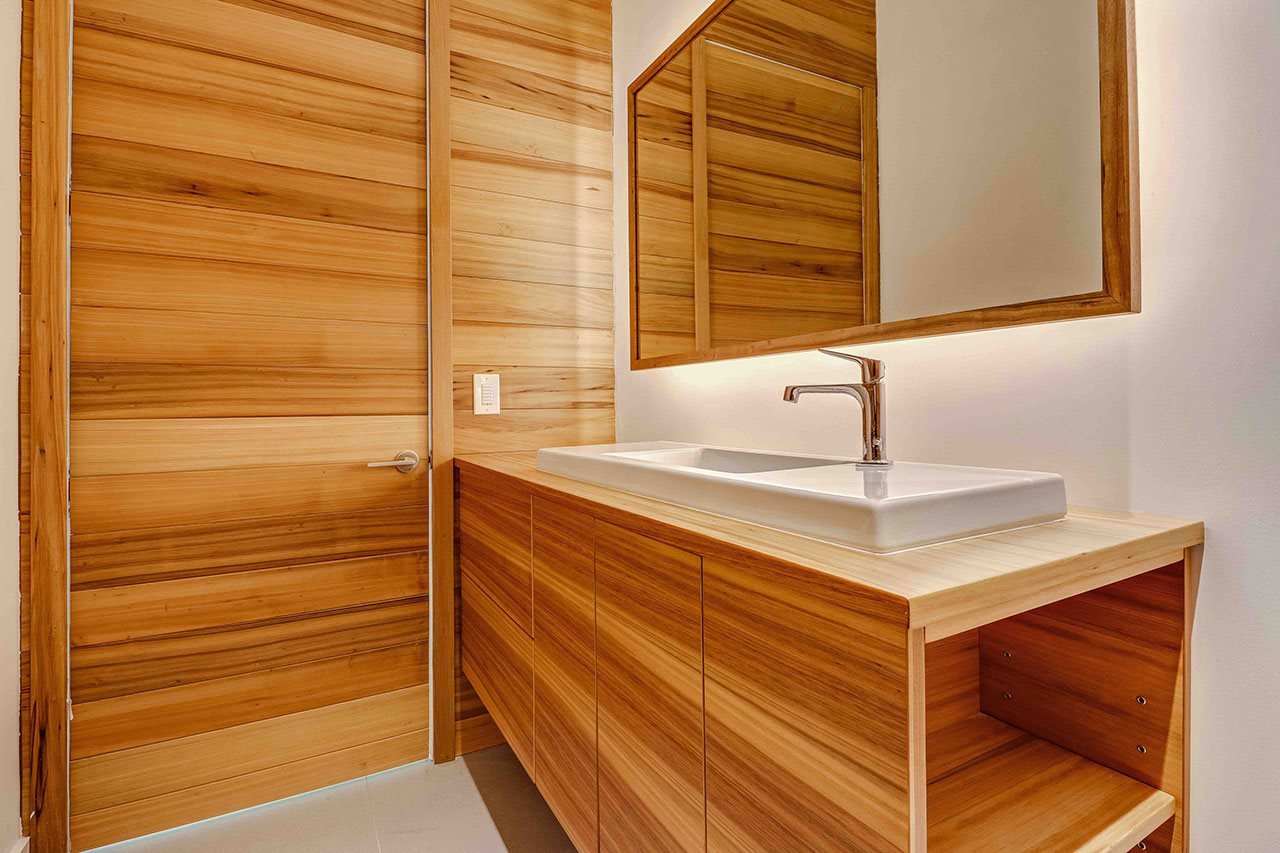
For the (Home) Spa
Whether outfitting a guest bath—or splurging on your master—creating a luxurious, spa-like sanctuary involves more than fancy faucets and fixtures! Enhance your space with a custom vanity that provides aesthetic warmth, as well as plenty of storage. “Vanities serve a utilitarian purpose,” says woodworker Jason Straw of Gainesville, Florida. “But a custom, modern vanity crafted from real wood is similar to art. When relaxing in the tub, you can sit back and enjoy its presence.”
And no worries about crafting cabinetry for wet zones. Straw believes cypress is the best choice. “It’s not only beautiful,” Straw says, “but the cypressene oil found in its heartwood naturally protects it from water damage and mildew.”
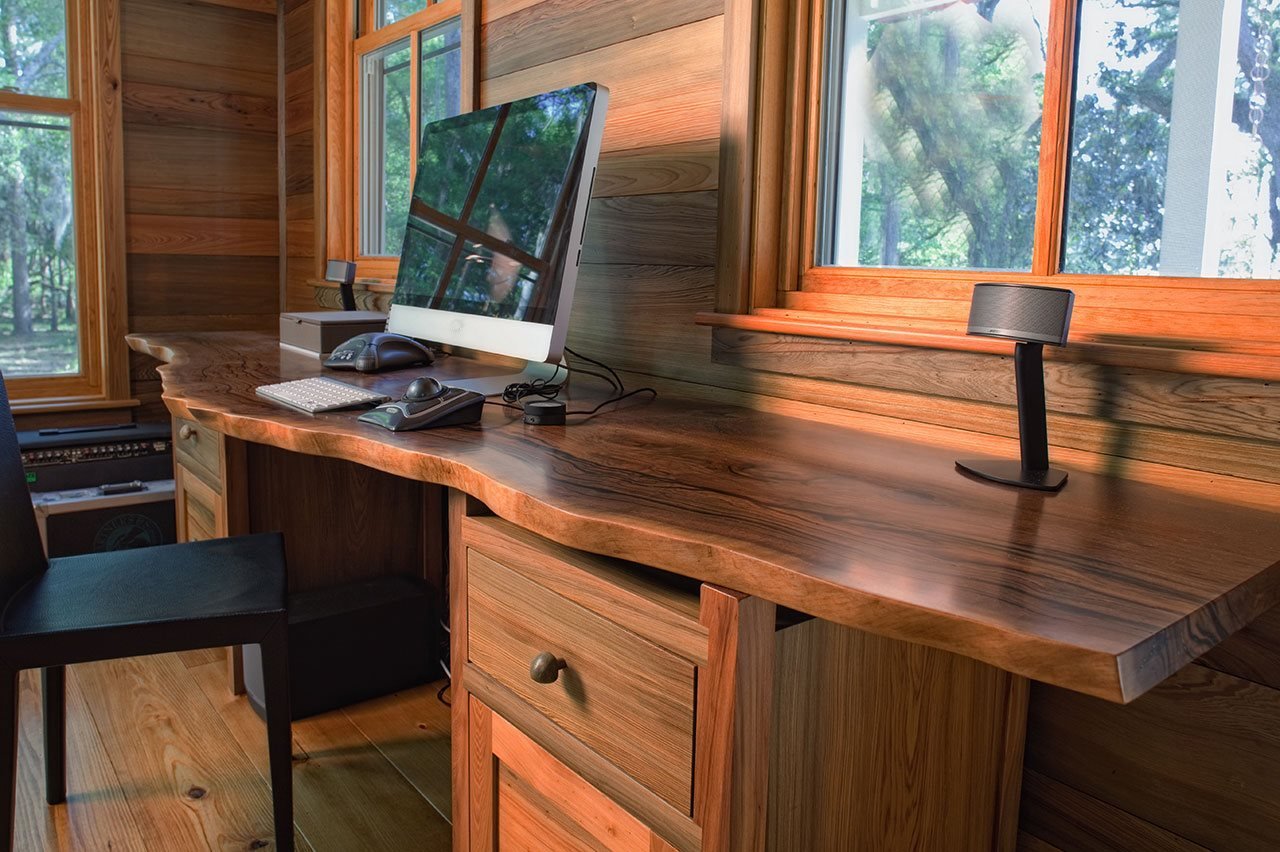
For the Finishing Touch
If you work from home or need to put in extra hours, a home office is a must-have—offering a quiet space to stay on task and organized. According to Jane Frederick of Frederick + Frederick Architects in Beaufort, South Carolina—and a past president of the American Institute of Architects—design and comfort are two primary considerations when it comes to picking out a high-quality desk.
“Touching a solid surface speaks to the quality of construction,” Frederick says. “And the finishes make a big difference. I once designed a desk made out of solid, river-recovered cypress, with a live-edge walnut top. In addition to being built to last, it’s stunningly beautiful.”
Whether building a dream home, renovating an existing one, or simply trying to be better organized, look to cypress for creating functional and beautiful storage stunners. Visit www.CypressInfo.org to see how.


 - Winter holidays are fast approaching, and while you’re busy planning meals, buying gifts and decorating, there’s one more preparation that shouldn’t be overlooked: cleaning your home top to bottom to prepare for the influx of guests. While we tend to focus on the obvious areas – like the kitchen counters and toilets – there are several overlooked spots that are prone to grime, odors and buildup that can make or break your hosting experience.
- Winter holidays are fast approaching, and while you’re busy planning meals, buying gifts and decorating, there’s one more preparation that shouldn’t be overlooked: cleaning your home top to bottom to prepare for the influx of guests. While we tend to focus on the obvious areas – like the kitchen counters and toilets – there are several overlooked spots that are prone to grime, odors and buildup that can make or break your hosting experience. - Thermally modified Real American Hardwood® is a durable, sustainable product gaining traction in U.S. home design. Developed in Finland in the 1990s, the process involves heating wood to over 400°F in a low-oxygen chamber, permanently altering its cellular structure to boost resistance to moisture, decay, and insects—without chemicals. It’s also more dimensionally stable, making it less likely to warp or twist. “Thermally modified hardwood is an eco-friendly alternative to pressure-treated wood,” notes Ian Faight of the
- Thermally modified Real American Hardwood® is a durable, sustainable product gaining traction in U.S. home design. Developed in Finland in the 1990s, the process involves heating wood to over 400°F in a low-oxygen chamber, permanently altering its cellular structure to boost resistance to moisture, decay, and insects—without chemicals. It’s also more dimensionally stable, making it less likely to warp or twist. “Thermally modified hardwood is an eco-friendly alternative to pressure-treated wood,” notes Ian Faight of the 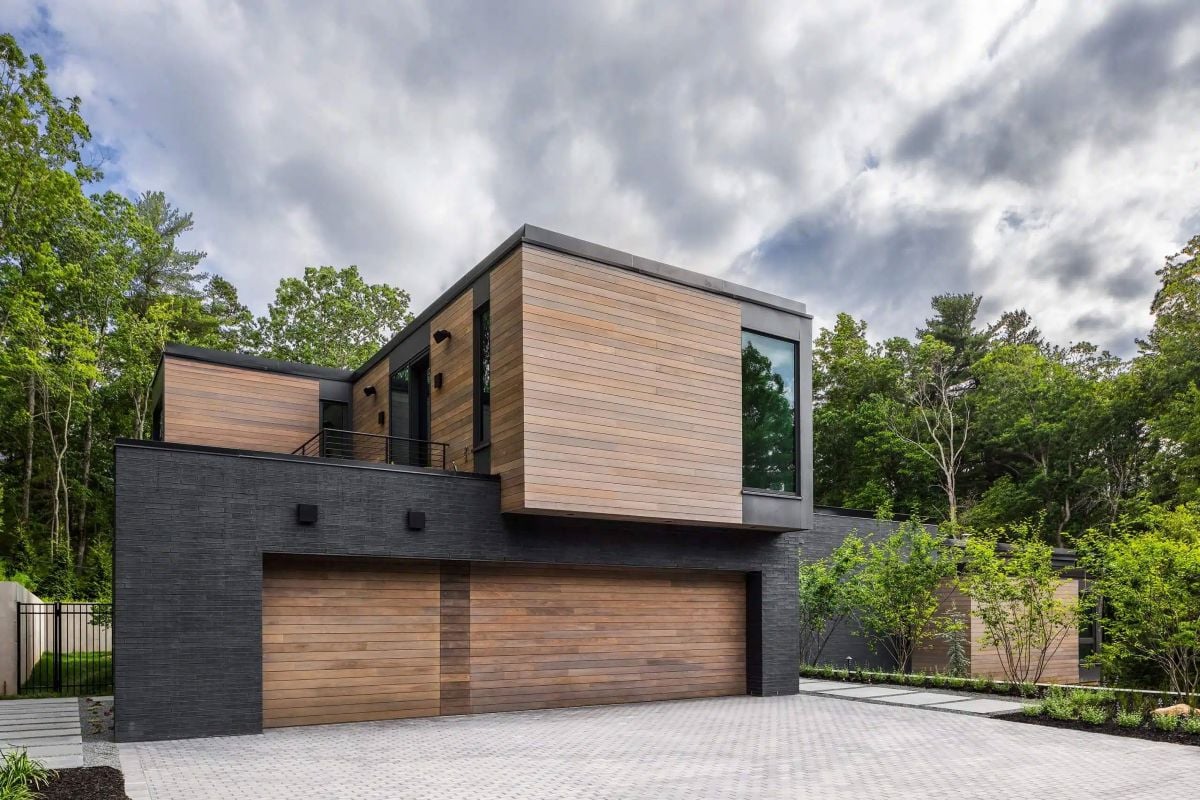
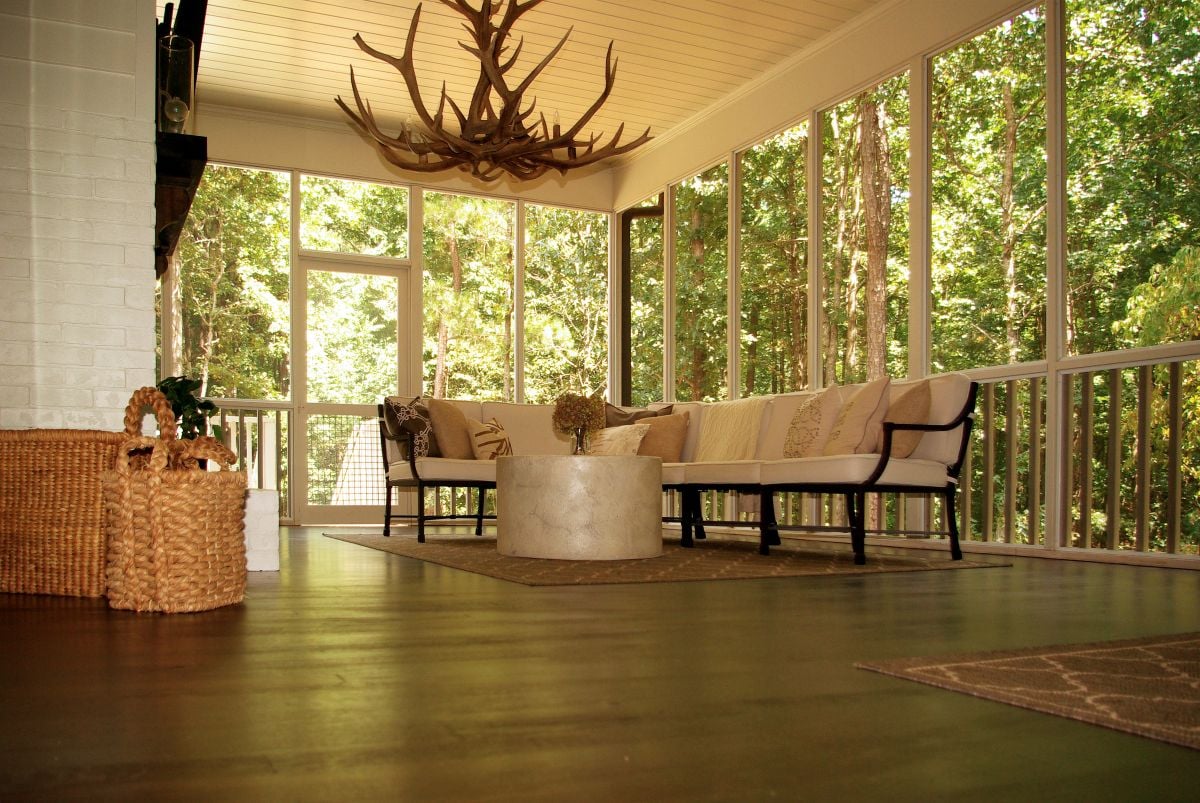
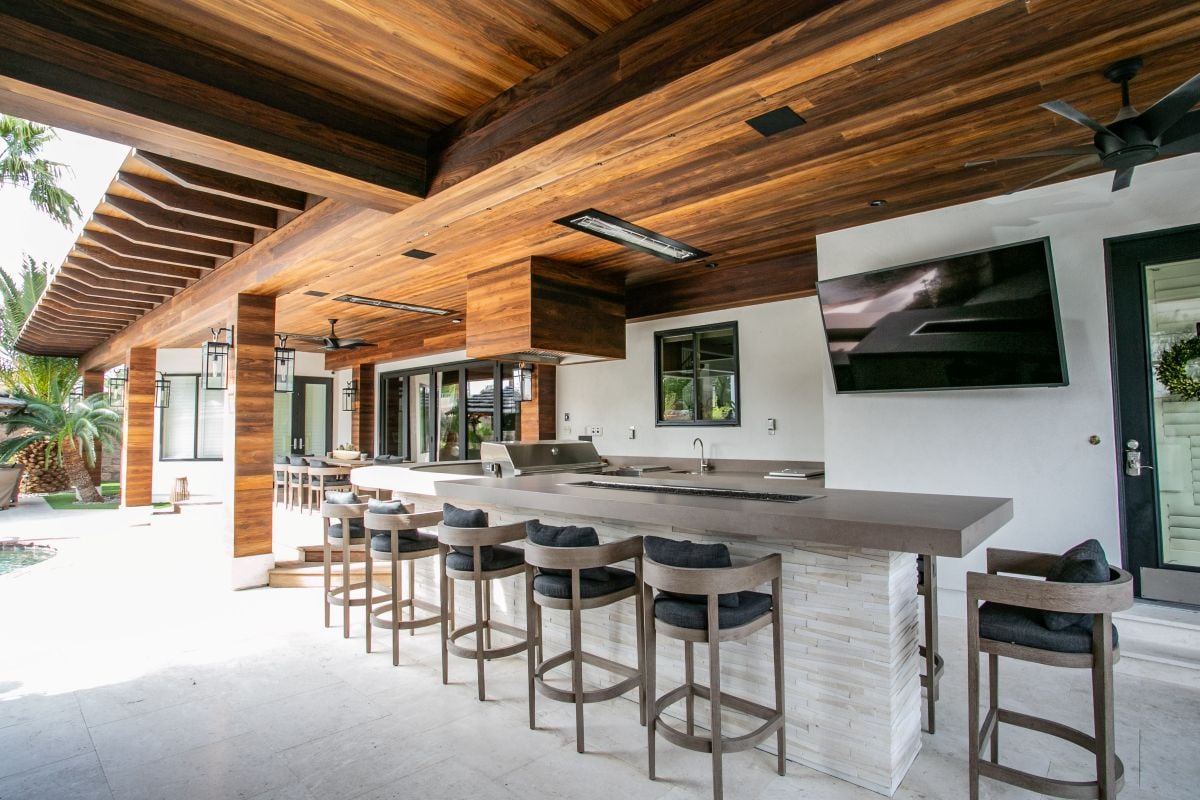
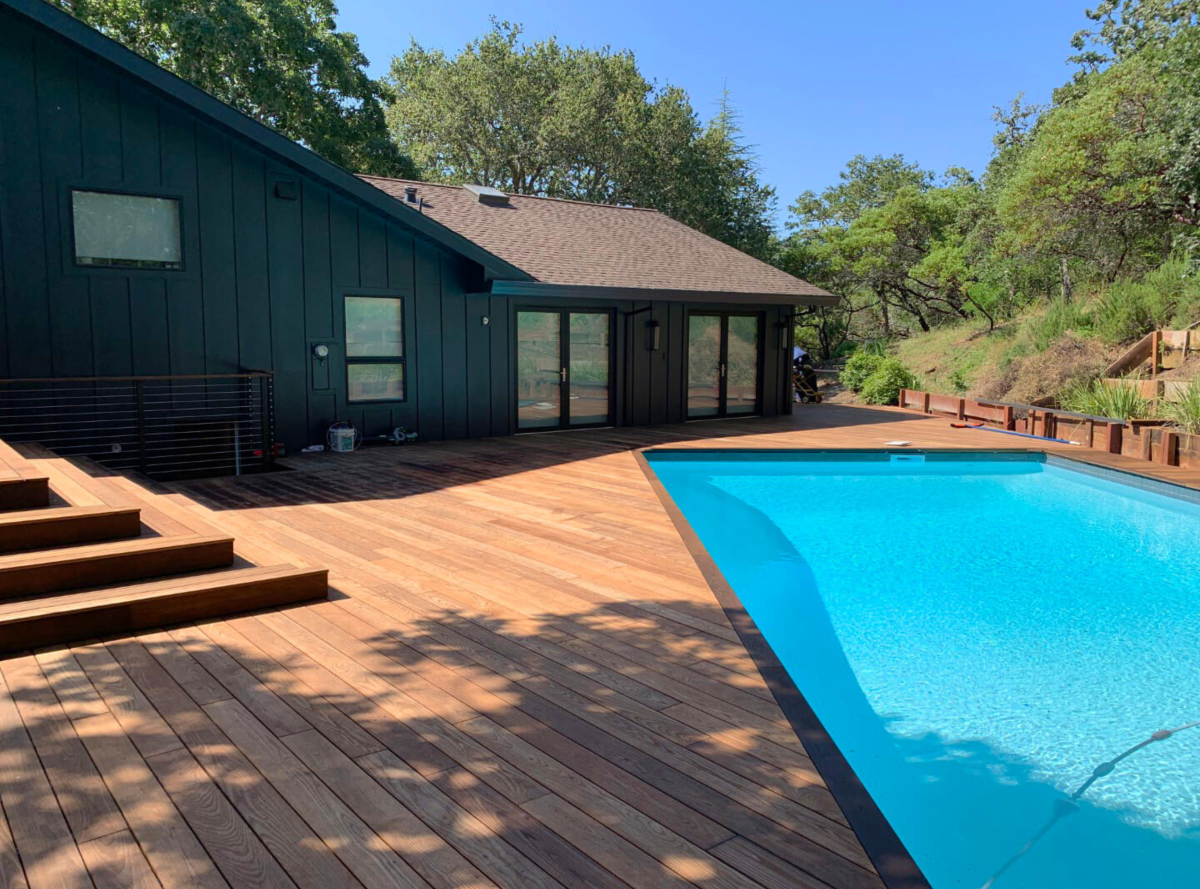
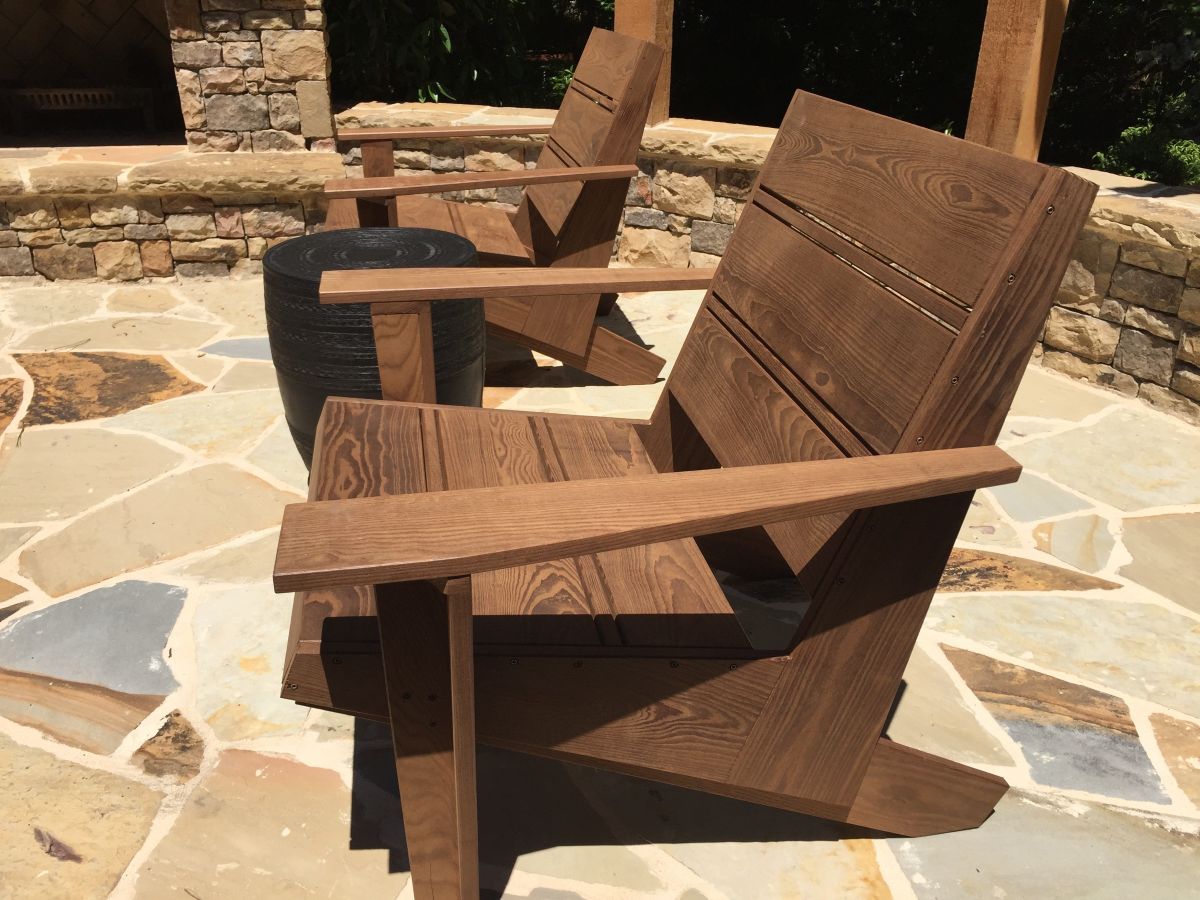
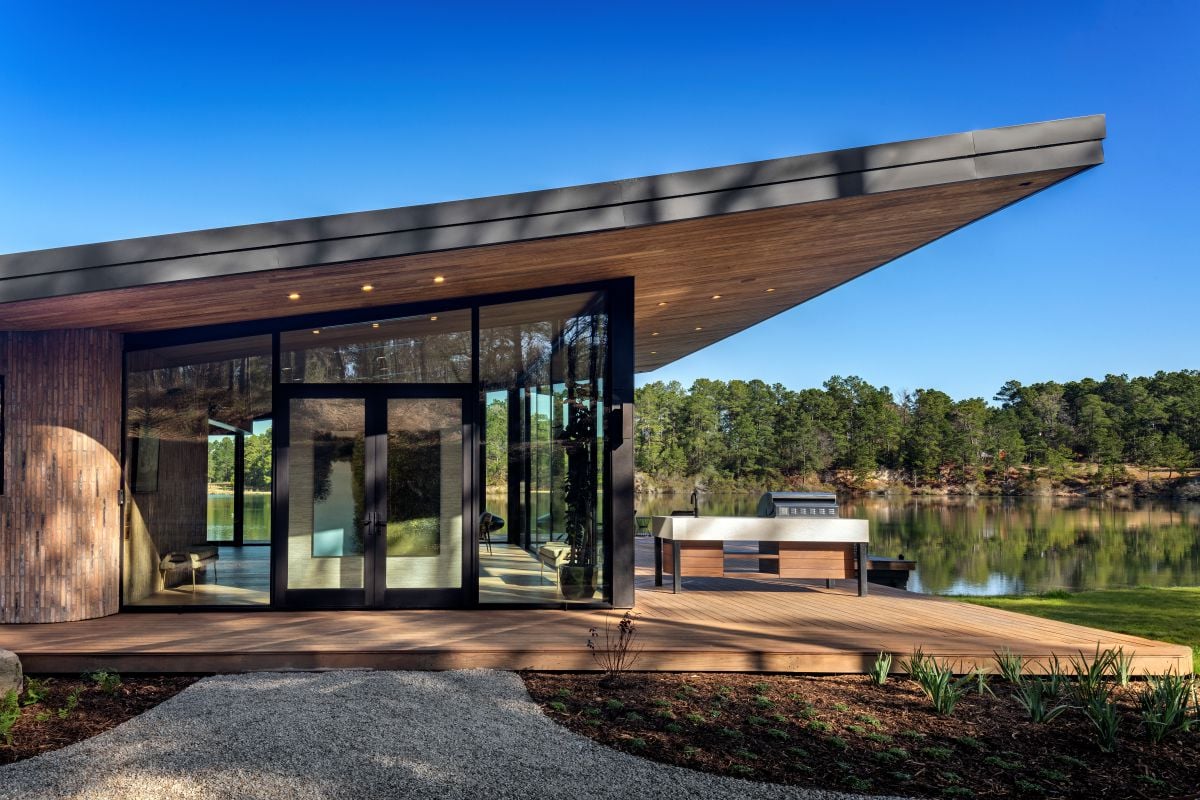
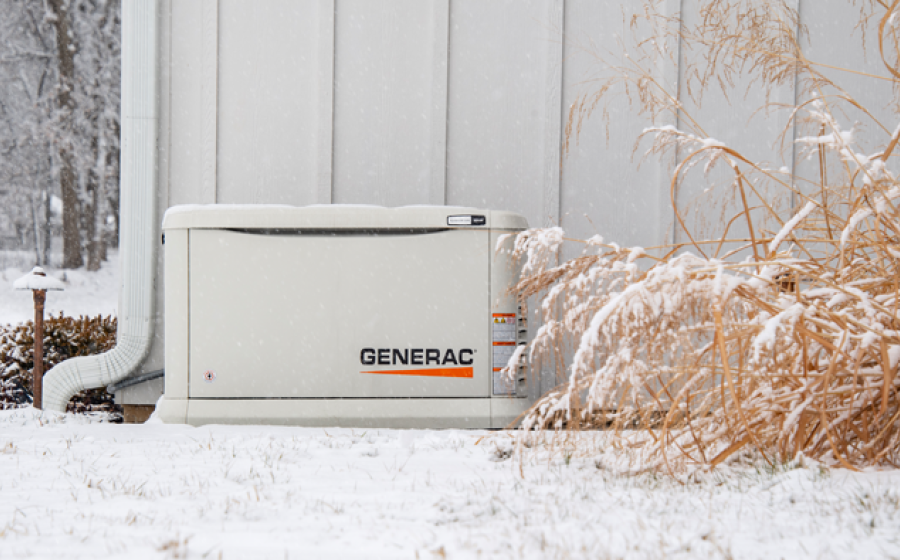
 - Cold weather is coming, and homeowners need to prepare now for potential power outages.
- Cold weather is coming, and homeowners need to prepare now for potential power outages.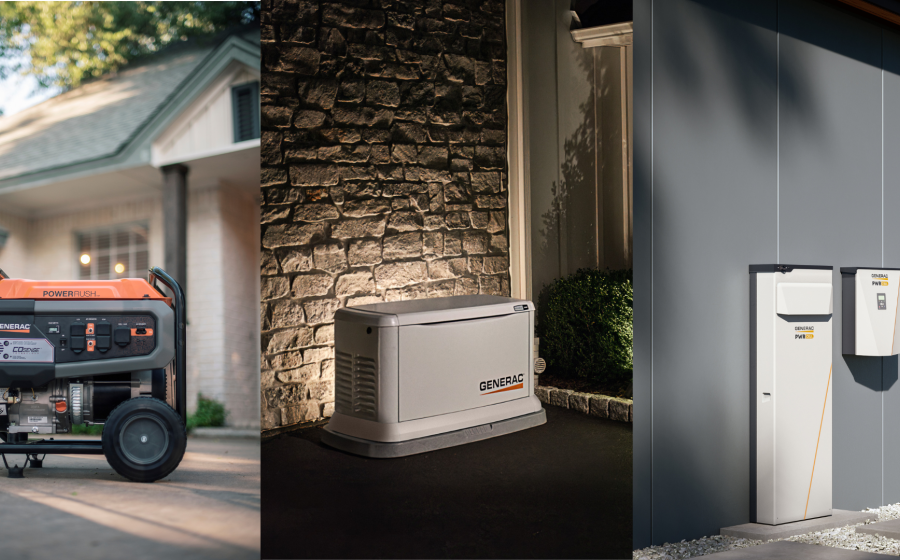
 - A need for reliable backup emergency power will be more critical this fall and winter season. Experts warn that extreme weather could bring additional power outages as temperatures surge and storms grow fiercer. Tropical storms are expected to intensify. The National Oceanic and Atmospheric Administration (NOAA) continues to advise that a highly active hurricane season will likely continue in the Atlantic through 2024.
- A need for reliable backup emergency power will be more critical this fall and winter season. Experts warn that extreme weather could bring additional power outages as temperatures surge and storms grow fiercer. Tropical storms are expected to intensify. The National Oceanic and Atmospheric Administration (NOAA) continues to advise that a highly active hurricane season will likely continue in the Atlantic through 2024. - In today’s increasingly fast-paced world, finding moments of peace and tranquility at home is more important than ever. Here are four simple ways to turn your backyard into a serene sanctuary:
- In today’s increasingly fast-paced world, finding moments of peace and tranquility at home is more important than ever. Here are four simple ways to turn your backyard into a serene sanctuary: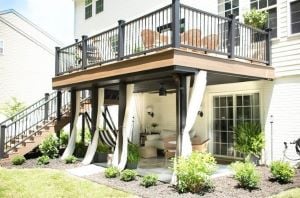
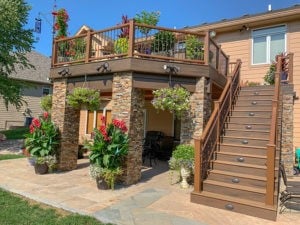
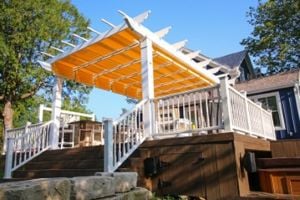
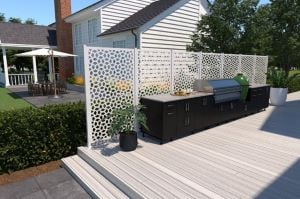
 - Solid wood has always been the gold standard when it comes to high-quality home furniture. “Whether it’s something major like a dining table and chairs or a smaller item like a nightstand, making it with Real American Hardwood® will ensure that it’s not only strong and durable but also unique and characterful,” says Ian Faight of the
- Solid wood has always been the gold standard when it comes to high-quality home furniture. “Whether it’s something major like a dining table and chairs or a smaller item like a nightstand, making it with Real American Hardwood® will ensure that it’s not only strong and durable but also unique and characterful,” says Ian Faight of the 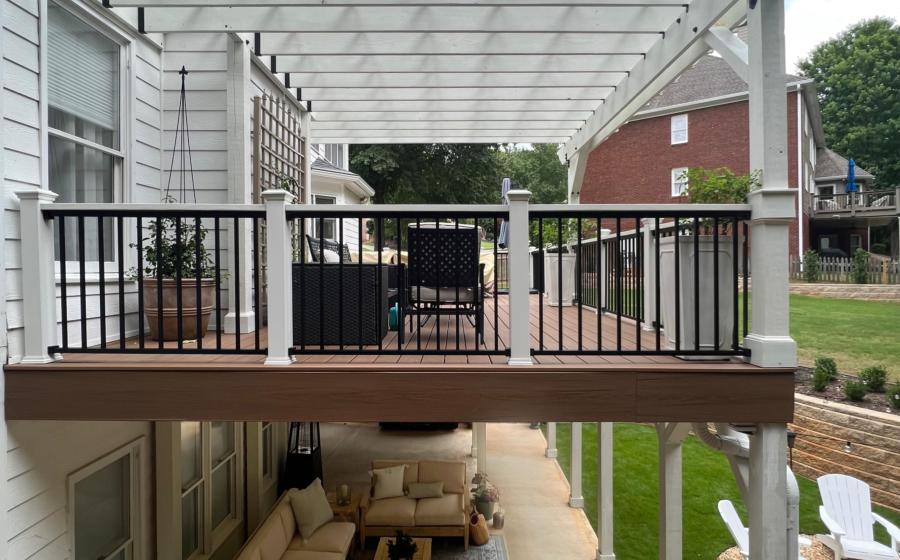
 - If you plan to add an elevated deck to your home, there’s one element that will greatly increase its value and function: an
- If you plan to add an elevated deck to your home, there’s one element that will greatly increase its value and function: an 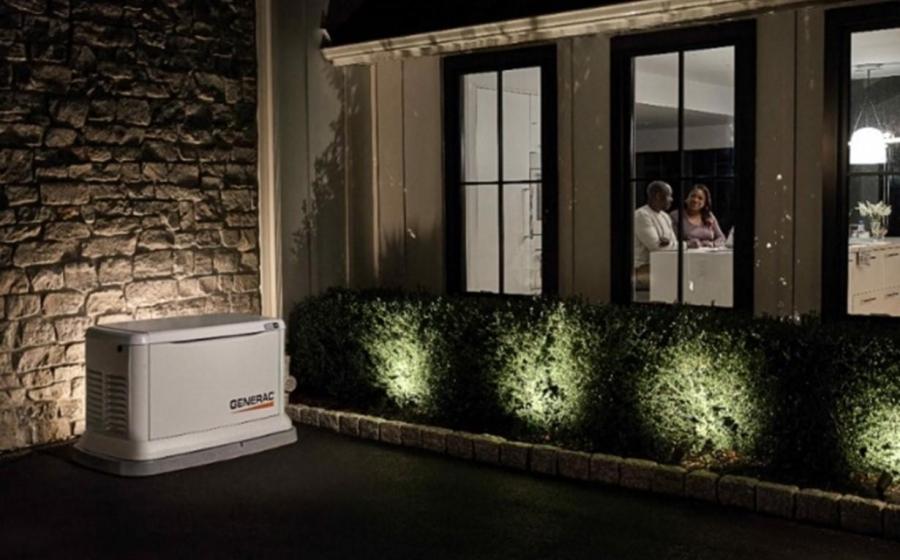
 - Recent Generac/Harris Poll survey provides insights into preparedness for widespread power outages*
- Recent Generac/Harris Poll survey provides insights into preparedness for widespread power outages*
 - Today’s homeowners are having an Extra Room Boom! This latest real estate reality is marked by the convergence of two mounting trends – growing home sizes and declining household members – that together mean more extra space and energy-efficiency challenges.
- Today’s homeowners are having an Extra Room Boom! This latest real estate reality is marked by the convergence of two mounting trends – growing home sizes and declining household members – that together mean more extra space and energy-efficiency challenges.



